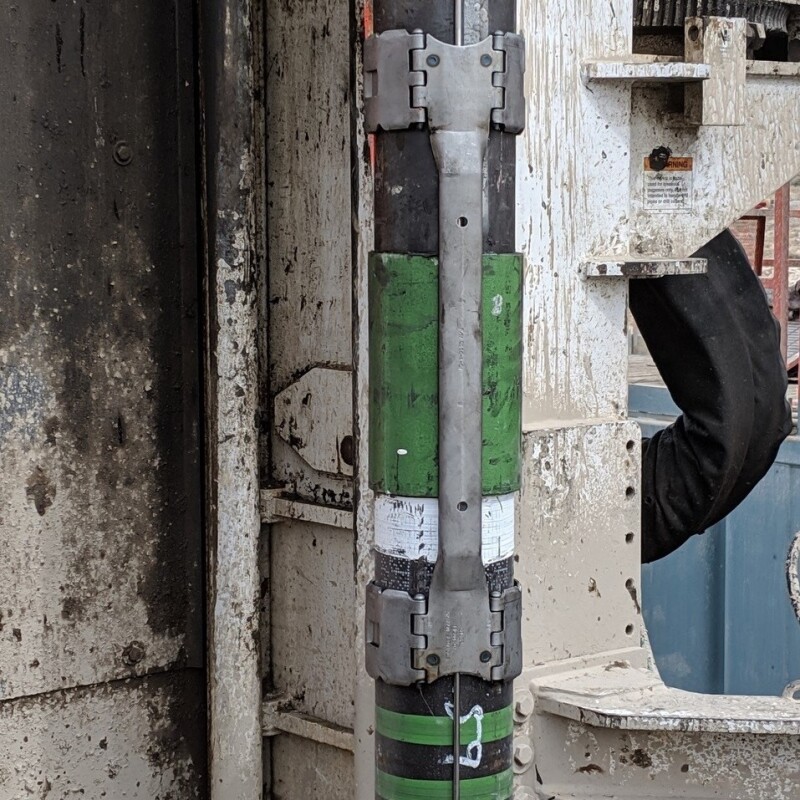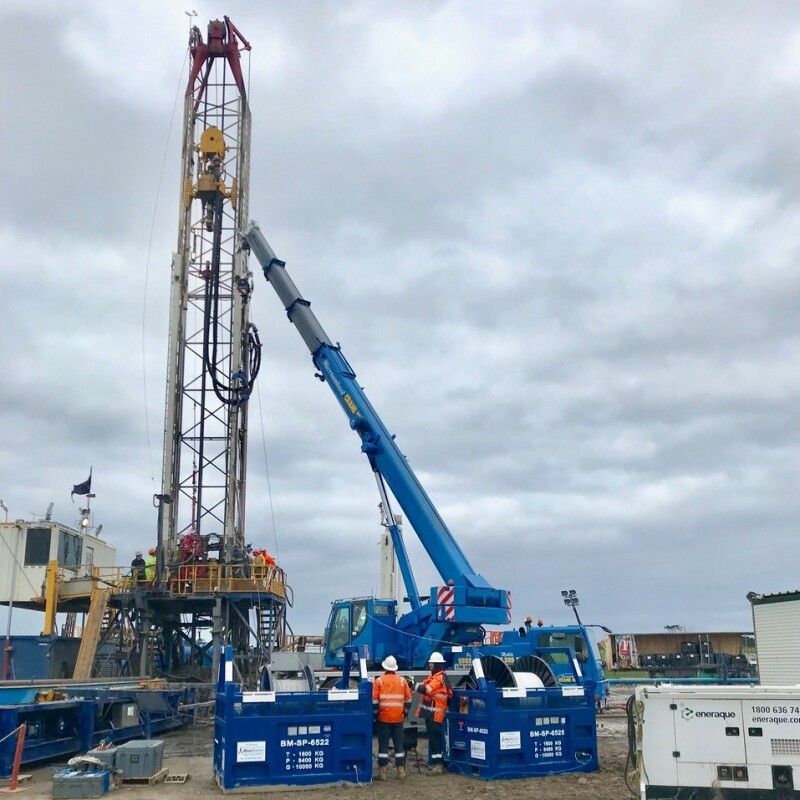Fiber optics represents one of the biggest technological success stories in the recent history of the oil and gas industry.
A single fiber-optic cable installed outside the casing, inside the tubing, can deliver a wealth of data over a well’s life cycle. It can sense minute shifts in acoustics, temperature, and has recently been developed to detect changes in near-wellbore strain—all prized clues as to what is helping or hurting productivity.
But less than a decade ago, the ultrathin glass cables were considered exotic, and only a handful of first adopters dared to deploy them downhole. The sensing technology has, of course, gone on to become a mainstay of subsurface diagnostic programs for operators working across the planet.
Now, with their skills sharpened in the upstream industry, many fiber-optics developers are gearing up for what appears to be a coming boom in carbon capture and storage (CCS) capacity.
Among them is UK-based Silixa.
Founded in 2007, Silixa’s innovations have improved on the spatial resolution of fiber measurements and enabled real-time monitoring of fracture growth and production. Last year, the company installed the world’s first subsea distributed acoustic sensing (DAS) system for BP to enable 4D seismic acquisition in the Gulf of Mexico.

Glynn Williams, CEO of Silixa, shares in this Q&A how all this experience points to fiber having a major role to play in the rise of the CCS sector—especially when it comes to safety and regulatory matters.
His background features more than 30 years spent in the upstream industry’s data acquisition arena. Williams also holds a degree in mining engineering from the University of Wales and is a member of SPE.
Where do you see the carbon sequestration sector headed—is an inflection point coming?
This now consumes a lot of my time.
We see CCS as a huge opportunity because we’ve been engaged with the sector for a long period of time.
For the type of solutions that we deliver, we can extract perhaps $1 of value for each ton per year of CO2 that is stored. When you look at the projections by the IEA, which suggest we may be storing over 7.5 gigatons of CO2 by 2050, that relates to $7.6 billion of value.
That’s if we were to be successful in securing all of that—there will be other players alongside us. But to this point, we’ve provided services to 17 CCS sites going back as early as 2012.
So, we’ve got a track record with our environmental business unit that serves CCS, and we’re seeing in the current period a twofold increase in pipeline opportunities. We feel that particular business unit will account for 40% of our overall pipeline in 2023.
What are the drivers for all this? What does fiber-optic technology deliver in CCS projects and why is it needed?
As mentioned, fiber has been employed in the CCS sector from as early as 2012—so, it’s a proven system.
The conventional technologies that are being used here include single-point pressure and temperature gauges. Also, either surface geophone arrays or downhole geophone arrays, which are quite difficult to employ since they are bulky and you can only get a limited number of channels.
What we believe is that fiber systems will greatly reduce the cost of meeting monitoring, measurement, and verification requirements. That’s because it’s an inherently reliable system.
It’s only fiber in the well—there are no electronics.
And with our Carina sensing system, we have a signal-to-noise ratio that is one hundred times higher than standard fiber systems. That means we can reduce the size and cost of the seismic sources that are required to make frequent time-lapse subsurface images.
We also have pilots underway with partners in Australia that have developed a fully automated system, including the seismic sources. In that case, we don’t need to send personnel on site to do a time-lapse survey which is required to map the development of the underground plume and identify any unknown faults during the appraisal phase.
We think these measurements will become one of the principal requirements from a regulatory point of view for CCS.
It’s all about containment.
Once in the ground, will the CO2 remain in the intended area? Time-lapse seismic is a very powerful tool for finding that out and it has been used for many decades.

Can you share a bit more about the seismic applications you’re speaking to here, and are there others?
In CCS, we perform active seismic to image the storage area and get a better understanding of any structural faulting in the area. Then during injection we use passive seismic, and that’s when we’re listening to microseismic events that will indicate movement and placement of the plume. They may also reveal when those movements happen along any existing faults.
We also use the microseismic as a means of meeting any regulatory requirements that may be in place. We’ve got programs underway in northern Canada where we’re precisely doing that—just passively listening to the microseismicity during injection of fluids into the subsurface area.
But as we engage further in CCS, we actually see that well integrity is becoming the tier one issue. And of course, with an optical cable in the completion we can see any indication of movement of fluids back up along the wellbore. So, in addition to the active and passive seismic, it’s a natural well integrity tool.
We can also use the same system to observe where CO2 is being placed into the injection well. We often use DAS in oil and gas operations for injection profiling, and we use those same techniques to identify where the CO2 is being placed inside the storage reservoir.
To add, one of the unknowns with CCS is how long after the cessation of injection will you be required to monitor the storage area.
We’re hearing in California that perhaps it could be as much as 1,000 years. In the view we’re taking, it’s going to be at least several decades.
So far, we have optical fibers that have been placed in the Caspian Sea since around 2002—or 20 years of proven reliability on optical fiber systems.
OK, switching gears to upstream, particularly the unconventional sector. How do you sum up the difference fiber has made in our understanding of tight reservoirs, and can you touch on the use of temporary cable deployments?
Fiber optics have had a major impact on tight-reservoir understanding. It is a method you could use to look at treatment of the wells, but when required, our Carina sensing system can also do far-field, real-time fracture monitoring as well as seismic imaging. We can actually start to see very clear seismic measurements at extended ranges and can accurately map the fracture heights.
Fiber optics give us a better understanding of where the production is coming from, looks at the components of the well, and helps us see how the fracture networks work together. It is truly exciting.
During fracture operations, there is also a lot of work done with geophones. These are usually installed on the surface as intervention operations with geophones requiring much more time than fiber. But overall, they are limited in what measurements they can produce.
Fiber optics can be installed permanently to monitor the treatment and see where the treatment is going. They can also see how microseismic events are directly related to fracture development.
At the same time, you can measure changes in the frac program and make decisions on the fly. You have full data sets—no other tech provides this amount of information.
And clearly Silixa was quite a big disruptor in 2018 when we determined that we could actually make high-quality measurements of strain and microseismic activity in a crosswell setting by intervening with a logging cable rather than having the expense of a permanent cable.
To pick up on that last bit, what’s been your impression on the emerging use of fiber for crosswell strain measurements?
Introducing our fiber-optic sensing-based strain measurements meant a big leap forward. Putting fiber-optic cables in an offset well either permanently or temporarily means that operators can get very precise and reliable information on what is going on in the well during treatment, hence the treatment can be optimized. Also, based on these measurements operators can optimize well spacing.
These measurements cannot be taken with any other instrument, not even with geophones. Also, with fiber optics you can measure the magnitude of events, so the answers you get at the wellsite in real time are very precise and ensure significant cost savings.
Finally, where does fiber technology go from here?
There is still work that needs to be done on quantitative flow measurements and it requires the development of new installation methods so that we can understand the transfer function of free flow in a pipe and what we are measuring with the fiber. But I think people now want engineered metric units that could be directly related to production.
There is also a lot of interest in the low-frequency measurements where we have demonstrated we can create very fine spatial strain measurements. We can use these to monitor production from individual clusters or perhaps even fractures when we look at implied pressure transition effects in a distributed format.
That requires careful planning, good execution during cable installations, a well-designed test, and careful data analysis. Obviously, fiber optics can still provide more information. It’s not just about collecting data but translating it into real applications and quantifying the magnitude of changes—if it is flow, strain, rock displacement, etc.


